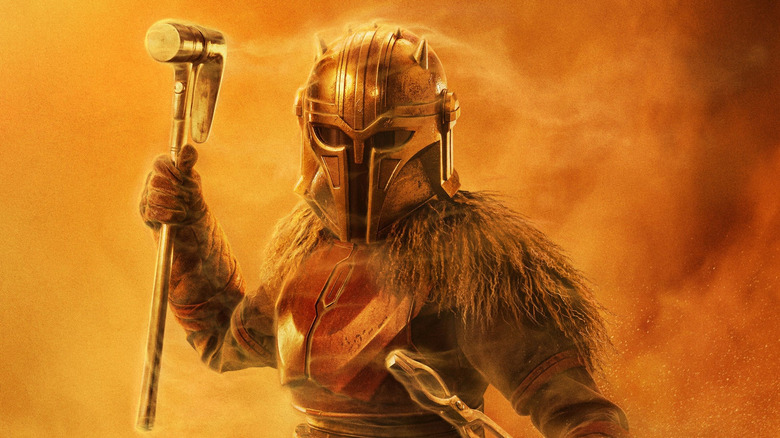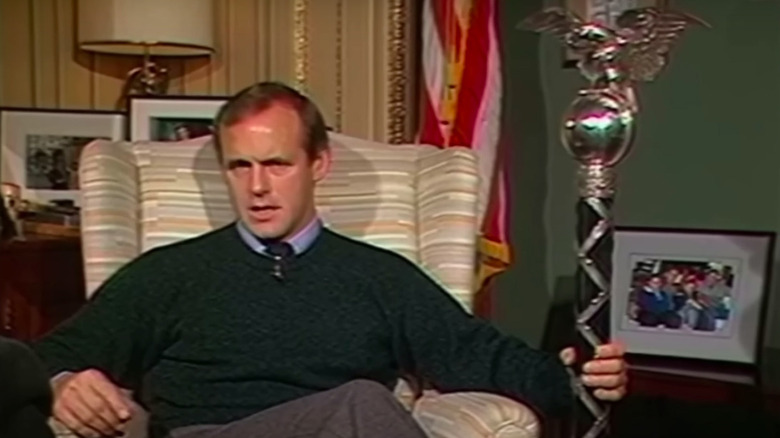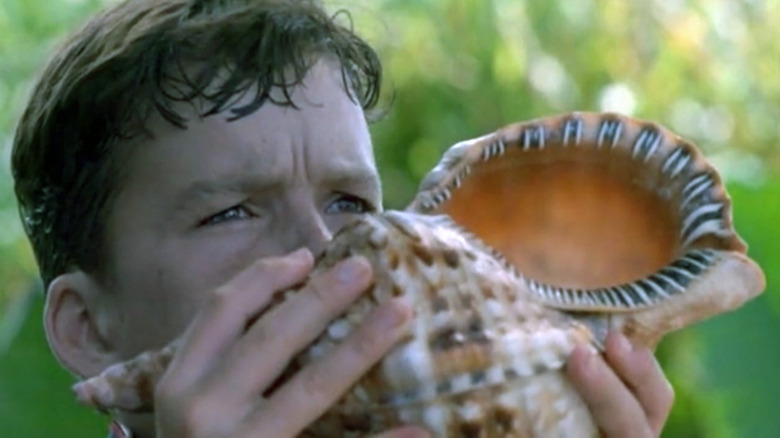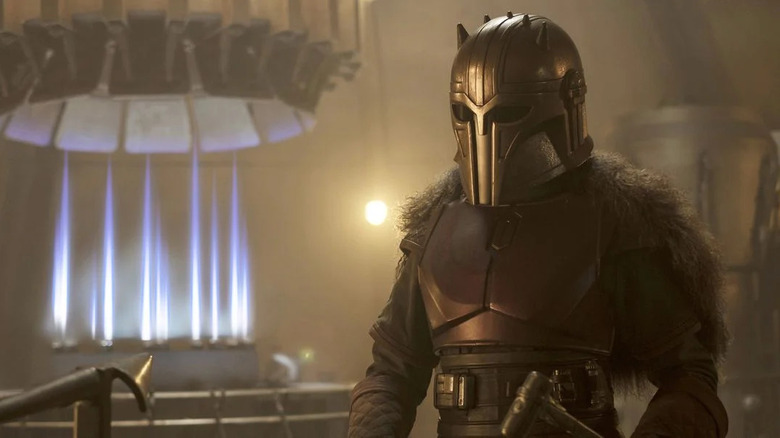The Mandalorian Talking Hammer Proves The Greatest Weapon Of All ... Is Discourse
There will be spoilers for "Star Wars: The Mandalorian" Chapter 21 – The Pirate
In the latest episode of "The Mandalorian," Chapter 21 – "The Pirate," a choice is brought before the Mandalorians hiding in their secret covert. Captain Carson Teva has tracked them down and given them information about the plight of Greef Karga and the people on Nevarro, under attack by Gorian Shard, the Pirate King. Din Djarin feels honor-bound to go back and help, but he needs help. Accordingly, he's given a chance to address the other members of the covert to see if they would be willing to risk themselves to help.
As the Mandalorians debate this in their secret cavern, each speaker is handed the Armorer's gravity hammer when it's their turn to speak. They respect the honor of the hammer and listen attentively to whoever wields it. This same concept actually has a long history in a galaxy not so far away, right here on Earth.
A long history of talking sticks and ceremonial maces
Talking sticks (or speaking staffs) have a long history in American indigenous cultures, particularly the tribes in the Northwest of the United States. The stick would be used by leaders as a symbol of their authority, just as the Armorer uses her gravity hammer and magnetic tongs, and holding such items would allow one the honor of their position.
There's a long European tradition of ceremonial weapons used for legislative authority as well. In the United Kingdom Parliament, they've used a ceremonial mace to honor the authority of the Speaker of the House dating back to the 13th century. The sergeant-at-arms gained more and more pomp and glamour with their weapons as time went on. Today, the House of Commons can operate when the royal mace, which dates back to the reign of Charles II, is present.
In the United States, the Mace of the House of Representatives (pictured above) is used similarly. It stands on a green marble pedestal whenever the House is in session, and you'll see it on display if you watch a lot of C-SPAN. Instead of handing it to members who are given the authority to speak, it is presented in front of members who have become unruly and need to stop speaking.
In 1798, the first time the Mace was presented to members of congress, Connecticut Federalist Roger Griswold insulted Vermont Democrat Matthew Lyon, who responded by spitting in Griswold's face. Griswold returned to congress the next day and attacked Lyon with his cane. In turn, Lyon retrieved a pair of tongs from the fireplace, but before he could use them, the Mace was presented, decorum was restored, and business carried on.
Interestingly, there have been three Maces of the US House of Representatives. The first was used from the founding of the country until the War of 1812, when the British sacked the capitol, they also destroyed the ceremonial Mace. A wooden substitute was used until the current Mace was constructed.
The conch and Lord of the Flies
There's a long literary tradition of holding an object for the right to speak. Many will recall William Golding's book "Lord of the Flies," where a conch shell is used for that very purpose. "Lord of the Flies" tells the tale of a group of British boys stranded on a distant island and they fall into chaos as they attempt to self-govern.
For the boys on the island, the conch was what Piggy and Ralph used to blow into to find other survivors of the crash. As the story progressed, they viewed the conch as a symbol that allowed them to speak, just like the gravity hammer in this episode of "The Mandalorian." In the story, the conch represents civilization and the rule of law, which the boys slowly lose as they descend further into madness. Though the thesis of "Lord of the Flies" doesn't necessarily hold up to scrutiny, being that humans are naturally barbarous and will destroy each other to attain power rather than help each other in times of stress, it's still a stunning piece of art and literature.
Speak softly and carry a big stick
Theodore Roosevelt, 26th President of the United States, used to say this famous phrase, "Speak softly, and carry a big stick." He attributed that quote to a proverb from West Africa, showing that wisdom dated much further back than he did.
This old proverb seems to be the philosophy of the Armorer on "The Mandalorian." She speaks softly and has no hesitation to wield her hammer and tongs in battle, even though other, more dangerous weapons might be available to her.
We see her hand that authority of speech around to those who would speak in their coverts meeting. She would take that same hammer to destroy her piratical enemies on Nevarro. And she would speak softly, holding the hammer at her waist, as she spoke to Bo-Katan Kryze about the need to create unity among the tribes of Mandalore.
It's such a small moment in the episode, but it speaks volumes about the Mandalorian culture and its ties to the real world.
"The Mandalorian" is streaming on Disney+. New episodes arrive on Wednesdays.



